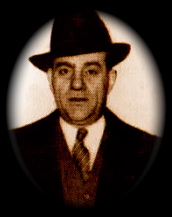Johnny Lazia
Kansas City mafia, Boss Tom Pendergast, political machine, mob boss, bootlegging

Reared in the poor, over-crowded neighborhood of Kansas City’s “Little Italy” in 1887, John Lazia was destined to end up in the hand of the most powerful men in crime. After spending about eight months of 15 years in jail at the age of 18 for armed robbery, the United States government offered Lazia, and many other prisoners, parole as long as they enlisted in the army right as the United States was about the enter World War I. Lazia took the offer, but instead of enlisting, he headed back to Kansas City where he teamed up with Mike Ross, a well-respected Irishman who helped elect gangster-boss Tom Pendergast into city management. During Pendergast’s reign, Lazia became the “boss” of the Northland and the to go-to man for bootlegged liquor during the Prohibition years in the 1920s. It is said that Lazia became the “unofficial sheriff of Kansas City” through his strong persuasion and control over the “hard–crimes” in the area and if anyone decided to cross Lazia, then Lazia would take them down. However, as with any power, Lazia slowly lost his influence over the area in the 1930s when more gangsters started to fight for control. On June 17, 1933, Vernon Miller, another powerful gangster leader, along with Lazia, organized the liberation of two bank robbers in Kansas City. This resulted in the infamous Kansas City’s Union Station massacre where four policemen were shot down by Lazia’s men at Union Station. After this tragic event, Pendergast decided that Lazia could not be trusted and could no longer be under his political protection. Without this protection, Lazia was arrested for bootlegging and other illegal activities and was sentenced to one year in prison. After Lazia had been released from jail, he was brutally shot-down and killed on July 10, 1934. He is buried at Mount Saint Mary’s Cemetery, 2201 Cleveland Ave.










